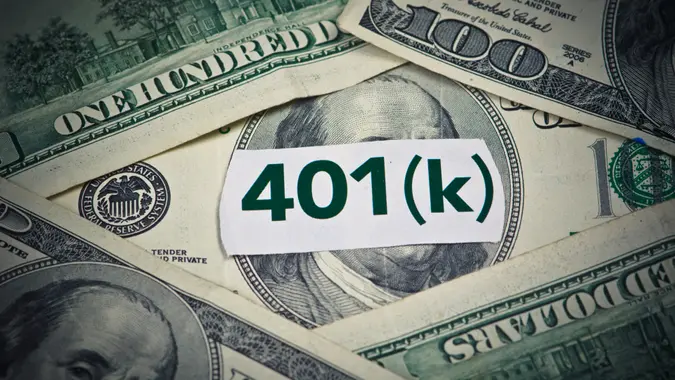Suze Orman Says This Retirement Planning Mistake Could Stall Your Savings: Are You Making It?

Commitment to Our Readers
GOBankingRates' editorial team is committed to bringing you unbiased reviews and information. We use data-driven methodologies to evaluate financial products and services - our reviews and ratings are not influenced by advertisers. You can read more about our editorial guidelines and our products and services review methodology.

20 Years
Helping You Live Richer

Reviewed
by Experts

Trusted by
Millions of Readers
If there’s one area where you want your finances locked down, it’s retirement. It’s why you’ve got a Roth IRA, maybe an annuity, and of course, you’re taking advantage of your employer’s 401(k) match.
You’re doing everything right — or so you think. According to finance expert Suze Orman, you might actually be making a costly mistake when it comes to your retirement savings. What’s alarming is how easy it is to overlook.
Remember all the things you had to juggle when you transferred jobs? You were so excited about the new opportunity, and some details just fell through the cracks — like taking a close look at what the change meant for your 401(k). Orman is concerned that you might be making a big misstep with this core retirement account. Here’s what to watch for.
Auto-Enroll Could Mean You’re Leaving Money Behind
One of the perks of starting a new job, beyond a salary bump and new opportunities, is that many accounts auto-enroll, including your 401(k). However, the time you save skipping manual setup could end up costing you big money in the long run — as in, during your retirement years.
Orman breaks it all down in a blog post: “As you may have experienced, many employers now automatically enroll new workers in their retirement plan when they are hired. That’s great! But the issue is when they automatically enroll someone it can typically be at a low contribution rate. For example, it’s common for many plans to start new workers at a contribution rate of 3% of salary, and some then increase that rate annually.”
If you work for a company that increases that rate slowly — or not at all — you’re missing out on years of potential savings. And anyone familiar with Orman’s advice knows that 3% simply doesn’t cut it.
“My advice is to get to 10% as fast as possible,” she wrote. “And if you didn’t save in your 20s and 30s, a 15% annual contribution rate is needed to build retirement security.”
Don’t Let a Bigger Salary Fool You Into Contributing Less
Orman wants you to go to HR on day one of your new job and set your contribution rate at least as high as what you were contributing at your last job. Do it ASAP, before you get used to the idea that a bigger paycheck means you can slack on saving. If there’s one thing Orman wants to make clear, it’s this: A higher salary does not mean you can contribute a smaller percentage.
“Absolutely not approved, my friend,” she wrote. “Your spending hasn’t yet adjusted to the new higher salary, so this is the perfect time to boost your savings. You can now save more without reducing the amount of money that you were used to landing in your checking account each month to cover your living expenses.”
Stay Consistent With Smart Habits
The good news is that Orman isn’t asking you to overhaul your retirement strategy every time you change jobs. If anything, she simply wants you to stay consistent with the habits that have served you well at your last company.
Be diligent about ensuring your 401(k) contributions stay the same — or increase — and don’t let a higher salary lull you into financial complacency. A new job is a new chapter, but your retirement plan should still follow the same storyline: steady, smart and future-focused.
More From GOBankingRates
Source:
- Suze Orman, “Watch Out for This When Starting a New Job”
 Written by
Written by  Edited by
Edited by 
























